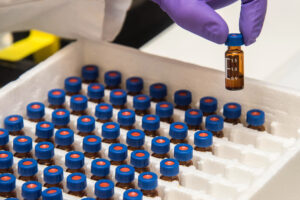Dr. Chamow is presenting at the PEPTALK 2018 conference in San Diego this week (Jan 8). His presentation is entitled “Making proteins “druggable”: Fc fusion proteins as a therapeutic class”. In this talk, Dr. Chamow highlights that the potential therapeutic value of many proteins—including enzymes, receptors, cytokines and peptides—can be realized by fusing these proteins to the Fc region of human immunoglobulin G. Often these proteins of interest are cleared quickly in serum which limits their therapeutic value. Immunoglobulin G has substantial in vivo stability due to its binding to the neonatal Fc receptor (FcRn) which is responsible for IgG recycling. By creating an Fc fusion, a protein with a short in vivo half-life can be transformed into a stable therapeutic product. This technology has been applied broadly and there are now 13 FDA approved products from this therapeutic class. Dr. Chamow compares and contrasts the structural properties of Fc fusion proteins to mAbs. He discusses a case study in which an Fc fusion protein that is unstable upon acid elution from Protein A can be stabilized by additives (1M urea, 10% sucrose); in addition, he describes the application, early in mAb discovery, of an HPLC analytical method (SMAC) capable of predicting developability of mAbs and Fc fusion proteins.
For further reading on the case study, please see Shukla A.A., et al. Protein aggregation kinetics during Protein A chromatography: Case study for an Fc fusion protein, J. Chromatogr. A 1171, 22-28 (2007), and for the SMAC method, Kohli N., et al. A novel screening method to assess developability for antibody-like molecules, mAbs 7:4, 752-758 (2015)





